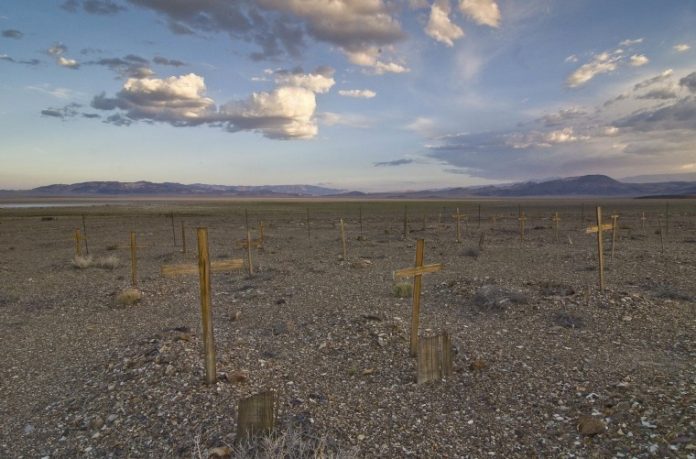Barren and desolate. Subtract a few gambling meccas from Nevada, and most of what is left can fairly be described as barren and desolate.
This Basin and Range portion of the Great Basin is a vast succession of dusty mountains and valleys where only sagebrush seems to thrive. But if you are a bit of a misanthrope, the silver lining of such a forbidding landscape is the prospect of profound solitude.
I faced a road trip to Wyoming where I would rendezvous with friends for a backpack trip in the Wind River Range. Rather than race through Nevada, I decided to crack a book or two and discover what is hidden in Nevada’s desolate expanse.
As it turns out, if you are willing to venture off the beaten path, ruins from long-gone mining operations – even full-fledged ghost towns – await in countless side canyons.
Getting to many of these sites requires a sturdy 4-wheel drive vehicle, but others are within reach of the family sedan.
I crossed the Sierra through Yosemite and turned toward Nevada on Highway 6, several miles south of Lee Vining and Mono Lake. The first hour’s drive in Nevada was beautiful and gave no hint of the dreary landscape ahead. The road snaked through elegant red rock outcrops dotted with twisted juniper trees while long straight sections of the road bobbed up and down in weightless leaps like the Giant Dipper rollercoaster at the Santa Cruz Boardwalk.
Above, the sky was deep blue, accented with fluffy cumulous clouds. With every mile, the landscape grew more immense and the highway more lonely.
I decided I would spend the night at Columbus, a ghost town across six easily passable miles of dirt road at the edge of the Candelaria Hills and the vast Columbus Salt Marsh. Here, the charm of the earlier landscape gave way to overpowering desiccation that earned my respect for any creature that calls this place home.
Columbus was originally settled in 1865 to process silver ore mined in the nearby Candelaria Hills. But the town’s heyday was in the 1870s when borax was discovered in the adjacent marsh. The town site, with its three remaining dilapidated structures, and the hills above are bare dirt. Not even sagebrush can make it here. Standing amid this desolation and silence, I could not imagine a thriving business community and the bustle of a thousand souls so many years ago.
For all its barren isolation, Columbus had charms in store.
As the day edged toward dusk, the light across the desert grew warm, softening the landscape. A short distance above the town site, I walked through a carefully fenced and gated cemetery. Each marker was the same, a simple cross made from two pieces of wooden lathe. Some plots had a solitary shingle placed upright in the sandy soil, names and dates erased by the years.
Near the cemetery, I unrolled my sleeping bag, pulled my pre-mixed Manhattans from the cooler, sat in my folding chair and watched night enfold this huge landscape.
Miles to the south, a fierce lightning storm pounded a distant mountain range. When I peered over my shoulder, the same was happening far to the north. Yet, I sat in complete stillness and comfortable warmth. Above was a moonless sky with uncountable stars.
Verdant Eden? No, but it is often hard to find a parking place or get a reservation in such places. On Nevada’s backroads, I found solitude, mystery and plenty of parking.








